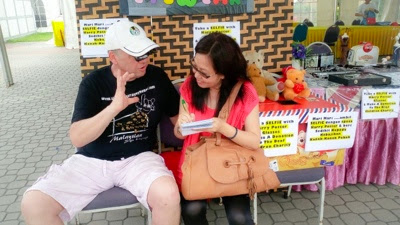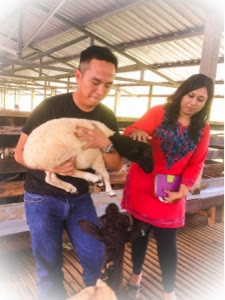WHEN I first ventured into the jungle and Orang Asli settlement areas, I was welcomed with open arms by the Orang Asli community.
The Orang Asli are warm-hearted folk who would be happy even if you had only bottles of honey as gifts for them.
However, now some of them want RM50 if you want to check the beehives whether or not the hives have honey. And it is RM50 per hive.
Yes, I make a living from collecting honey. But I do not like hives of bees that are reared. These bees are lazy, and do not produce the best honey.
Here is something that some may not know about the Orang Asli. If they don’t understand something that you are telling them, out comes their iPad.
Times have changed.
Honey has numerous benefits. It is good for those who smoke, as the honey can clean nicotine deposits in their lungs.
One can rub raw honey onto the palms of the hands and the skin of the hands will be smooth. One can do that on the face too, as honey acts as a moisturiser.
However, do not do it if your skin is sensitive.
Honey is also known to increase body heat.
To know whether you have genuine honey, there are numerous tests.
One is to keep the honey in a freezer. Genuine honey cannot be frozen.
You can also do the match test.
Dip a match into the honey. Although the tip is wet, the match will still light.
Another test is to break open an egg.
Pour the egg yolk into a bowl of honey. The egg yolk will be cooked.
When I go up to a beehive, I do not wear any protective gear.
I pray first, and I believe in the power of my faith. If I am not taking the honey with a sincere and pure heart, I would have been stung to death.
Although I do put a price to the honey that I collect and sell, I am more interested in helping people than making a profit. I want to help people with health issues.
If I know they are really sick and they are not rich, I ask them to give me what they can afford. I do not want to profit from the predicament of the poor.
I was born in Ipoh. My late father worked as a Customs officer. We came to Johor two weeks after the nation gained independence.
I had previously worked with Malaysia Airlines for three years before I went over to Indonesia to work as an administrator for the Indonesian government for 20 years.
It was during my time in Indonesia that I learnt about the benefits of honey.
After retirement, I decided to become a honey collector.
When I first came to Kg Melayu Majidee there was no electricity or water supply. It wasn’t until 1982 or 1983 that we had water supply and electricity.
Interview by Chuah Bee Kim
Pictures by Roslan Khamis
source NST online













